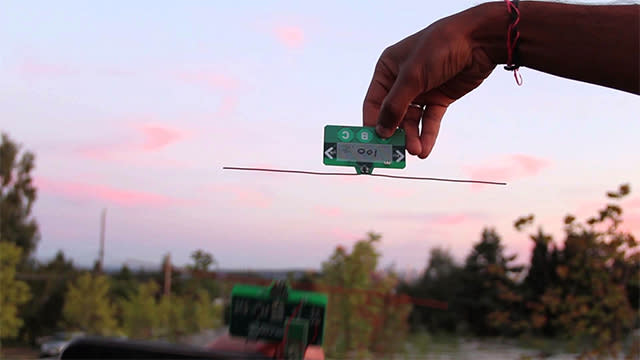ambientbackscatter
Latest

Wearables of the future may use reflected WiFi signals to communicate
Let's face it: our gadgets are growing smaller and smarter by the way, and making sure they've got enough power to get us through a day or two is no small feat. That problem wasn't lost on a team of researchers from UCLA and the Jet Propulsion Laboratory -- they've spent the last two years cooking up a way for a device to communicate with a WiFi router by reflecting the very signals it sends out back at it. The end result? An incredibly low-power way for future wearables (or other tiny gizmos) to send data back and forth.

University of Washington harnesses RF and TV waves for battery-free wireless devices (video)
The problem with power is that, eventually, it runs out. To help cope with this inevitability, scientists at the University of Washington have developed prototype "ambient backscatter" devices that can passively harness the juice in radio and TV waves. Because they don't generate their own signal, these devices can get by on the juice they siphon from the air -- communicating by absorbing or reflecting binary information from existing signals, instead. According to the researchers, these signals can travel as far as 6.5 miles from a TV tower at speeds of 1KB per second. Although the project is still in its infancy, its creators are already thinking up practical applications. Ambient backscatter tags could be built into buildings or bridges, for instance, and alert monitoring stations to potential structural damage or defects. The team also imagined tagged keys and furniture, warning a user if they accidentally dropped something between the couch cushions -- all without an energy source. This type of tech could bring us closer to the internet-of-things future we've been promised, allowing smart communications to exist virtually anywhere. The Huskies said this could even enable a dead smartphone to send TV signal-powered text messages -- which could be great considering how often we forget to charge our handsets.

